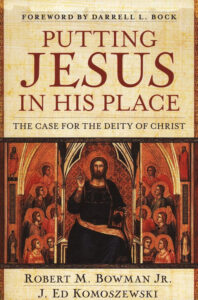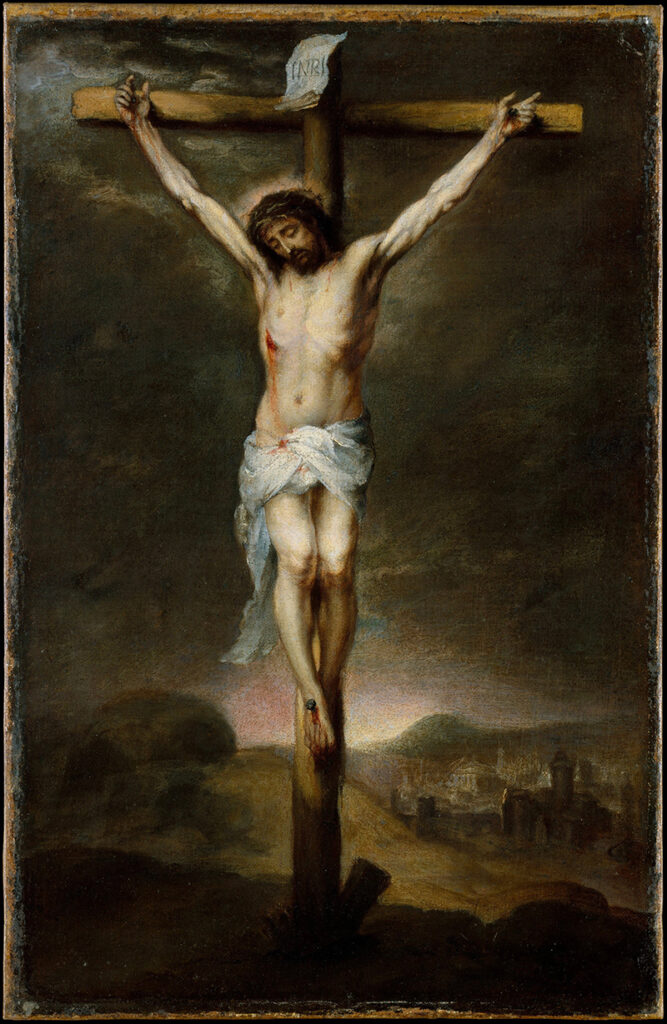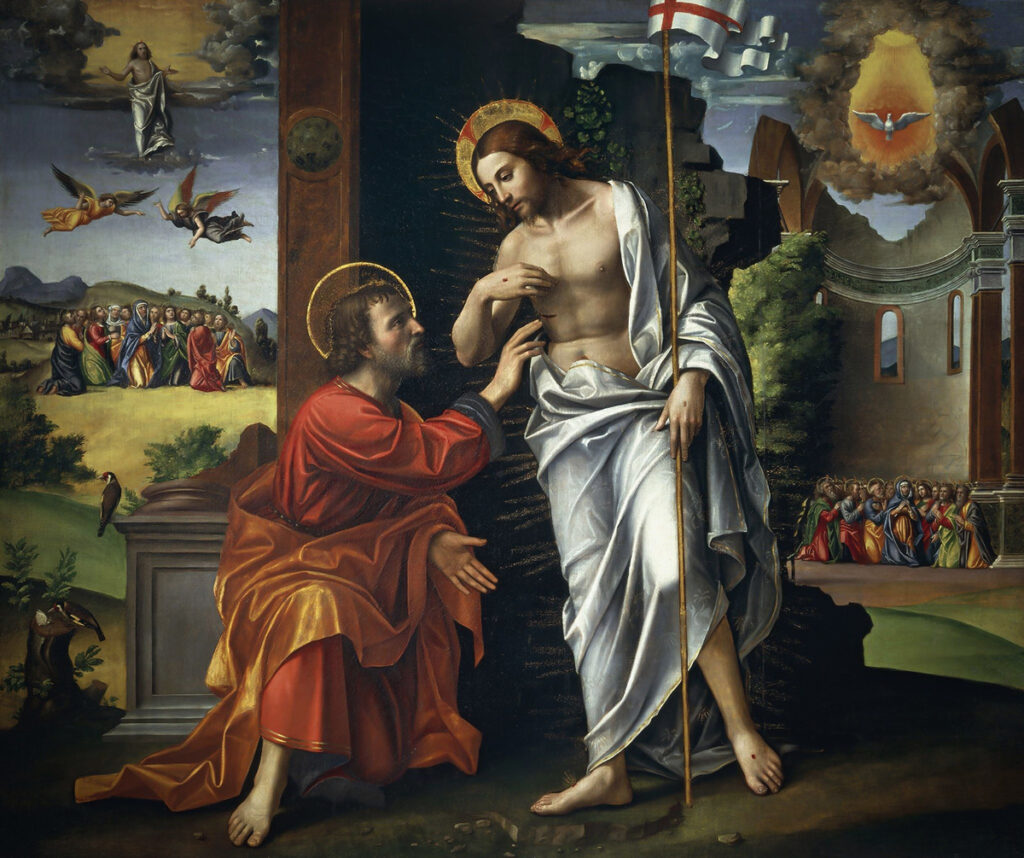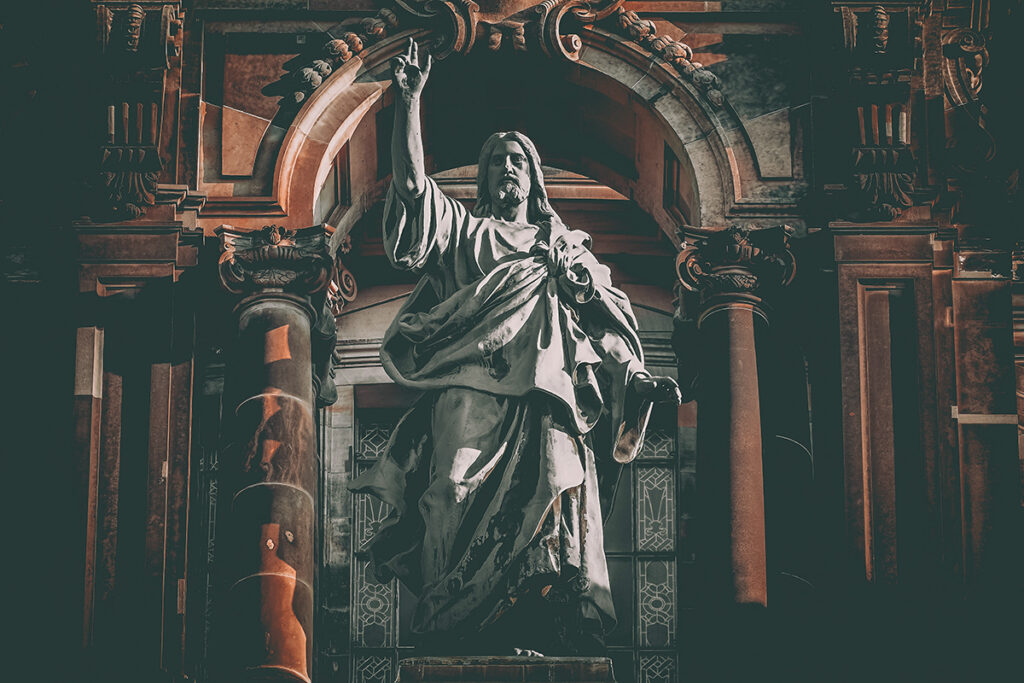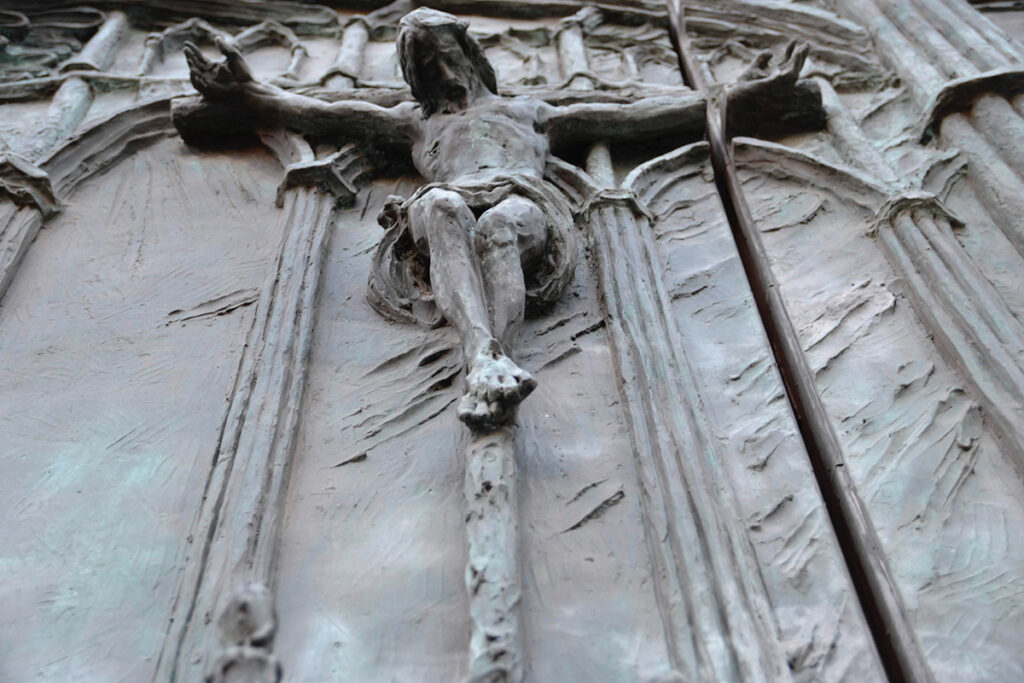Introduction
John Frame is a well-known seminary professor and theologian in the Reformed tradition. John Frame is an author, lecturer, and teacher of far-reaching significance. Frame’s magnum opus is his Systematic Theology which covers a wide range of doctrines of conventional orthodox Christianity. This paper covers a limited review of selected parts eight and nine—namely, the doctrines of Christ and the Holy Spirit. A review of this subject matter traverses across biblically anchored truths that originate as divine revelation to conclude the necessary understanding of Christ Jesus and the Holy Spirit as two persons of three within the triadic union.
The Doctrine of Christ
In part eight, through chapters 37 and 38, Frame extensively writes about Christ across two categorical areas of crucial interest. The Person and Work of Christ as separate and distinct areas of interest help the reader understand the deity, humanity, incarnation, attributes, and His two natures in hypostatic union. Moreover, Christ Jesus’ offices as King, Priest, and Prophet get significant attention as the intended interpretation is derived from the biblical text. As the work of Christ is more closely understood from Scripture, it becomes clear that Jesus was a prophet who foretold all the Old Testament and eschatological eventualities. He was and is a king who led and ruled His people. He was and is a high priest who interceded for His followers as He atoned for the sins of His people.
Frame describes Jesus as King of Kings and Lord of Lords and extols His status as Creator and Ruler over all existence. As Yahweh the Lord, Jesus is over the covenants with humanity throughout redemptive history. Within His kingship, as God incarnate, He does what God the Father does. Everything made was made through Him, and all things are held together by Him. He is the radiant glory of God the Father. While the royalty of Christ originates through the lineage of David, His power and authority are far more prominently recognized by His resurrection from the dead. By the work of Christ as King, He triumphed over sin and death to make atonement as the high priest over we who died with Him. Severed from sin, having died to it, we are united with Him in resurrection while He is Priest and King over all His people.
While Frame doesn’t extensively cite numerous primary or secondary footnoted sources during his systematic theology’s development, he provides various endnote resources for further study at the end of each chapter. These are helpful resources within the Reformed tradition for further study, including numerous materials from Puritans, influential faith leaders, institutional scholars, and seminary academics. While Frame uses journal articles to support his conclusions and propositional content, he far makes far more use of Scripture references throughout the body of his written work. While he sometimes references scholars who would dispute his Scripturally sound conclusions, assertions, and propositions, he always returns to Scripture with corresponding intertextual weight to reinforce his points and arrive at biblical certainty before moving on.
While Frame further develops the doctrine of Christ, he does so in concert with the larger Westminster Larger Catechism (WLC). The two states of Christ’s stations involve His exaltation and humiliation. And questions 46 through 56 are posed by the WLC and answered in due course within the same. Namely, the Scriptural specifics about Christ’s exaltation by his resurrection, ascension, and coronation together situate Him above all as revered throughout the Kingdom of God and the Kingdom of Heaven. With Christ exalted at the right hand of God’s seat of power, Christ Jesus has power over all things in heaven and earth. As head of His church, Christ reigns over all humanity, all kingdoms past, present, and future, and all nations in an eschatological sense through redemptive history.
After Christ’s humiliation by crucifixion and death on the cross was followed by his “descent into hell,” according to the Apostolic Creed, He rendered to God redeemed people of the Old Testament and New Covenant believers fellowship as those who were adopted among the elect before eternity past. I agree with Frame that, contrary to some Baptist and King James Bible literalist perspectives, Christ’s descent wasn’t to hell because He was brought to a place of punishment. He “descended” to Hades, where those in Abraham’s Bosom were gathered and spiritually resurrected to dwell in heaven. Moreover, while in Hades, he appeared to the rebellious, disembodied, and fallen angelic creatures imprisoned in “chains of gloomy darkness” to proclaim victory over sin and death before His resurrection. After Jesus’ sacrificial death and descent into Hades, Christ’s physical and spiritual enemies were overcome by His triumphal resurrection, ascension, and coronation.
Christ’s presence before the Father as intercessor was now made possible for the elect in Christ. The latter were adopted as sons and daughters before the Priest-King, given to the Father in fellowship as intended before eternity past. According to Frame, as articulated within the WCF, the path to reconciliation was set for believers as the elect, adopted, and redeemed. As further believers are gathered before the Father through and “in Christ,” the eschatological already but not yet trajectory was set toward the final redemptive conclusion. Through passion, blood, story, drama, and apocalyptic intent, historically prophetic realization was assured from the proto-Evangelium to the Parousia.
Frame concludes His exposition on the doctrine of Christ by closely examining what it is to be in union with Him. Through an entire sequence of Christ’s work, there are blessings that must continually be heralded as God is to be worshiped and glorified. Frame threads Christ’s accomplishments with the following blessings toward believers. Our lives are blessed through election, calling, regeneration, faith, justification, adoption, sanctification, perseverance, and glorification. Through all this work, as believing recipients, this is what it is to be “in Christ.” This range of meaning substantiates union with Jesus Christ as people redeemed through the gospel. As born-again believers who inhabit His kingdom, we are sons and daughters in Christ who inherit a state of union while belonging to Him.
The Doctrine of the Holy Spirit
In part nine, through chapters 39 and 45, Frame’s systematic theology thoroughly examines the identity, events, and work of the Holy Spirit. As a more general understanding of the redemptive functionality of the triune God, the Father plans, the Son accomplishes, and the Spirit applies (as Frame puts it). In addition to Frame’s comprehensive approach to the doctrine of the Holy Spirit, various triad illustrations correspond to the subject matter concerning His identity and work. Each triad corresponds to the doctrine’s normative, situational, and existential view, where together they comprise of coherent epistemological and theological perspectives about a given subject.
These triperspectival illustrations appear in key locations through the reading on the doctrine of the Holy Spirit. This model presents a way of understanding matters of interest coherently without missing important details about corresponding points of relevant meaning.
The doctrine of the Holy Spirit begins with understanding God as a personal Spirit, not an impersonal force. To further provide context about the Holy Spirit within the triadic union of God, Frame makes the following general distinctions: The Father plans, the Son accomplishes, and the Spirit applies. Understanding the person of the Holy Spirit must precede cognitive recognition of His work, as abundantly evident throughout Scripture. Like the Father, and the Son, as God, the Holy Spirit is interpersonally situated within the Trinity. He is recognized by His attributes and worthy of worship, just as the Father and Son are. The Spirit is equal to the Father and the Son. The Spirit has a personality and a mind. He communicates in the first person.
Throughout the pages of Frame’s systematic theology about the Holy Spirit, extensive biblical passages are called upon to substantiate what the Holy Spirit does. Chapters of section nine are dedicated to doctrinal areas about the work of the Spirit in the lives of believers. More specifically, the Ordo Salutis is used as a pedagogical instrument to walk a reader through the overlapping, sequential, and biblically supported components of the Holy Spirit’s work. While Frame makes it clear that the linear orientation of the Ordo Salutis is not biblically supported, he does use its meaning to structure an understanding of what happens in the life of a believer where the Holy Spirit dwells.
The breadth and depth of the Spirit’s work in the lives of believers are astonishing. In elaborate detail, Frame effectively captures the biblical references in support of Baptism, the filling of the Spirit, the fruit of the Spirit, the gifts of the Spirit, miracles, prophecy, tongues, and healings exhibited among Old and New Testament believers. With careful attention to the work of the Spirit among believers today, Frame asserts the potentiality of God concerning miracles and supernatural gifts of the Spirit while calling attention to the effects of the indwelt Spirit among believers. In further and growing detail, this work is more understood as developed among numerous biblical passages. Frame does not at length rely upon scholars to form his views or arguments. Still, he occasionally cites orthodox confessions and the Heidelberg catechism to draw conclusions and illuminate further paths of understanding. Where there are exceptions, controversies, or counterpoint arguments to particular views, Frame will identify the source and corresponding specifics by name.
The clarity with which Frame organizes his thoughts and topics complements his substantively biblical views about the work of the Holy Spirit. The order of topics is summarized as follows.
- Calling
- Regeneration and Conversion
- Justification and Adoption
- Sanctification
- Perseverance and Assurance
- Glorification
Taking each area of work as a free-standing point of interest is a thoroughly helpful way to understand each category within the doctrine of the Holy Spirit. Beginning from who the Spirit is as a divine person to what He does, there is specific intentionality about Him ordered among believers and, to a limited extent, unbelievers. While there is a specific and separate focus on the work of the Spirit, it is clear that this work is cooperative and participative among all persons of the Holy Trinity. The work of the Spirit in these areas of doctrine is not the isolated endeavors of this person as God.
Calling
A distinction is made between two types of calling by the Holy Spirit. Frame separates them as a gospel call that can be resisted by individuals and an effectual call that cannot. The gospel call is the message of God’s redemptive invitation to everyone who can comprehend the meaning of Christ’s redemptive work, our guilt from sinful, and each person’s need for reconciliation with God in the form of salvation. Individuals can hear or perceive this message and respond either favorably or disfavorably, with lasting outcomes made sure by belief or disbelief. As many are called, but few are chosen (Matthew 22:14), the many will reject the gospel call and remain within their condemned state.
In contrast to the gospel call of individuals, the effectual calling is Scripturally sound, as it is declared in Paul’s letter to the Romans as it is sometimes referred to as the Ordo Salutis (Romans 8:29-30):
“For those whom he foreknew he also predestined to be conformed to the image of his Son, in order that he might be the firstborn among many brothers. And those whom he predestined he also called, and those whom he called he also justified, and those whom he justified he also glorified.”
The calling in this reference is preceded by the predestination declaration, which includes the status believers will attain as brothers to Christ. People predestined and called are brought into regeneration and faith with justification, adoption, and sanctification to follow. While this arrangement doesn’t necessarily hold in sequential order, the effectual calling in this passage does adhere to the meaning of a predestined status of believers. Effectual calling predicated upon predestined selection renders the will of God preeminent over the active or passive will of people left to their autonomous capacity to choose God while “dead in their sins” (Eph 2:1).
The Holy Spirit’s work in the effectual calling of each person is definitive and final as unbelievers who are chosen before the beginning of the world are brought into the Kingdom of God (Ephesians 1:4). Frame artfully collates the Scripture references that inform his readers about the Holy Spirit’s summoning of chosen people to the following outcomes.
The blessings of effectual calling: “the kingdom (1 Thess. 2:12), holiness (Rom. 1:7; 1 Cor. 1:2; 1 Thess. 4:7; 5:23–24), peace (1 Cor. 7:15), freedom (Gal. 5:13), hope (Eph. 1:18; 4:4), light (1 Peter 2:9), patient endurance (1 Peter 2:20–21), God’s kingdom of glory (1 Thess. 2:12), eternal life (2 Thess. 2:14; 1 Tim. 6:12; Heb. 9:15; 1 Peter 5:10; Rev. 19:9). So this calling is “high” (Phil. 3:14 KJV), “holy” (2 Tim. 1:9), and “heavenly” (Heb. 3:1). Ultimately it calls us into fellowship with Christ (1 Cor. 1:9).”
The Ordo Salutis, as the “Order of Salvation” in Latin, also pedagogically describes the work of the Holy Spirit as having additional effectual purpose. Specifically, Frame collectively orders the following formative efforts of the Holy Spirit to involve the spiritual development of people.
Regeneration and Conversion
The application of redemption by the Holy Spirit, made possible from the plan of the Father and what Christ accomplished includes the regeneration of unbelievers to people who are made holy and righteous before Him. From the effectual calling of a person, unbelievers undergo regeneration toward further spiritual formation. As faith is necessary for salvation, spiritual life is formed by the Holy Spirit through regeneration as a sovereign act of God. Regeneration precedes saving faith as good works and belief are the products of it. As Ephesians 2:8-9 specifically informs readers that grace and saving faith are a gift of God, the Holy Spirit renders power upon and within people to make them believe.
While Frame makes it clear that effectual calling is from the Father, the regeneration of an unbeliever is an act of the Holy Spirit. In both acts, the new birth of regeneration involves the passive acceptance of people to new life. To become born again is to become regenerated; the new believer has nothing to do with that process. To believe and live by faith through grace requires preceding regeneration, as indicated in John 3. However, as 1 Peter 1:23 and James 1:18 indicates that regeneration follows faith, the order of salvation is not necessarily a linear path as both meanings are rendered ambiguous in their sovereign relationship to one another.
As regeneration initiates a reorientation of the mind, will, and affections toward God, faith and repentance together constitute conversion. While it is explicit in Scripture that faith is a gift (Ephesians 2:8) and repentance is a gift (2 Tim 2:25), they are both something we practice as believers. Both belief and repentance are personal choices made by the cooperative intention of the Holy Spirit. Frame further develops the meaning of conversion as the work of the Holy Spirit. He draws attention to faith and repentance as components of conversion. Salvation is by grace through faith, but it also involves repentance. To Frame, faith and repentance are two sides of the same coin. Faith is the positive expression of belief, while repentance is the negative form of it. Both faith and repentance are necessary for salvation.
Justification and Adoption
Returning to the triperspectival view of epistemic knowledge concerning the work of God, Scripture informs us that justification is associated with regeneration and conversion. As believers are justified before God through Christ and His sacrificial atonement, we are adopted as sons and daughters of God. To attain justification is to be both declared righteous and made righteous.
To make adoption as children of God possible by the Holy Spirit, we must not only be brought to new life but made righteous, good, and holy. Justification as works of God through His forensic declaration upon believers and the imputed righteousness of Christ placed within them changes people’s legal and familial status. As Christ is Lord and brother in the sense we are adopted as sons and daughters, that requires more than a baseline status of declared justification. We must be made righteous and be righteous. We must be made holy and be holy.
Furthermore, the sins of justified believers are placed onto Christ as they are no longer attributed to those renewed for adoption. The constitutive declaration of believers as justified involves all persons of the Trinity necessary to attain union with Christ. God declares the regenerated converted as justified through Christ. Christ’s righteousness is imputed to believers, while the sins of believers are imputed to Him. A double imputation to establish the effective ground of justification is necessary for the spiritual growth and sanctification of the Spirit and adoption of believers. While there is punishment for unbelievers due to the wrath of God for sin, there is no punishment for believers adopted as sons and daughters. There is chastisement and correction through the Holy Spirit as He is involved in sanctification to render believers righteous and holy. Believers are the workmanship of God the Father, the Son, and the Holy Spirit.
Sanctification
The work of God to sanctify believers is to make them holy. It is an intentional work of God through grace to bring us into conformance with Christ. According to Frame’s biblical analysis, two types of sanctification are relevant to our interests. First, definitive sanctification is an instantaneous act of God upon a believer at a point in time concurrent with regeneration. More specifically, according to Frame, “Definitive sanctification is a once-for-all event, simultaneous with effectual calling and regeneration, that transfers us from the sphere of sin to the sphere of God’s holiness, from the kingdom of Satan to the kingdom of God” (Heb. 9:13–14; 10:10; 13:12). Through this type of sanctification, there is a separation of believers as holy from unbelievers in the world. It is an event by which there is a severing from sin (Rom. 6:11; Gal. 2:20; Col. 3:3) as believers are joined with Christ as it is said that it overlaps regeneration.
Progressive sanctification is a process of continued spiritual development. Made more holy, believers gradually increase through good works and maturity to bear the fruits of the Spirit. While the work of the Spirit present with believers increases their sanctification, He does so through their human effort. Progressive sanctification is a continuous intentional effort among believers to actively yield to God’s instructions for moral living, good works, and obedience.
Perseverance and Assurance
In the most simple terms, Frame calls attention to the Westminster Confession of Faith (WCF 17.1) to highlight what perseverance is: “They, whom God hath accepted in his Beloved, effectually called, and sanctified by his Spirit, can neither totally nor finally fall away from the state of grace, but shall certainly persevere therein to the end, and be eternally saved.” More concisely, the regenerate in a saving union with Christ cannot lose their salvation. In a more startling passage, John 10:27-29 informs believers that if anyone believes in Jesus now, they cannot lose their salvation. This salvation is in reference to eternal life once any person passes away at death. This is to escape God’s wrath and come into eternal fellowship with Christ. There is no condemnation to those in Christ Jesus (Romans 8:1). So when believers place their trust in Jesus, their past, present, and future sins are immediately and permanently forgiven. Believers are guarded until the end.
Glorification
The final area of Frame’s doctrine of the Holy Spirit concerns the glorification of believers. Along the path of the Ordo Solutis, of glorification of God includes his presence in the lives of believers. Where people who bear the image of God reflect back to Him the work of the Spirit, there is an effect of God’s glory made apparent on us. The work of the Spirit through regeneration, conversion, justification, sanctification, and adoption returns as a shekinah glory within yet reflected back to God for His cumulative and ongoing glory. The glory of God involves and includes His presence as it is unique and utterly foreign to a person’s natural sense. We can see and experience His glory with and through His presence and throughout creation, but our state from the Holy Spirit’s indwelling is a derivative glorification that abides.



